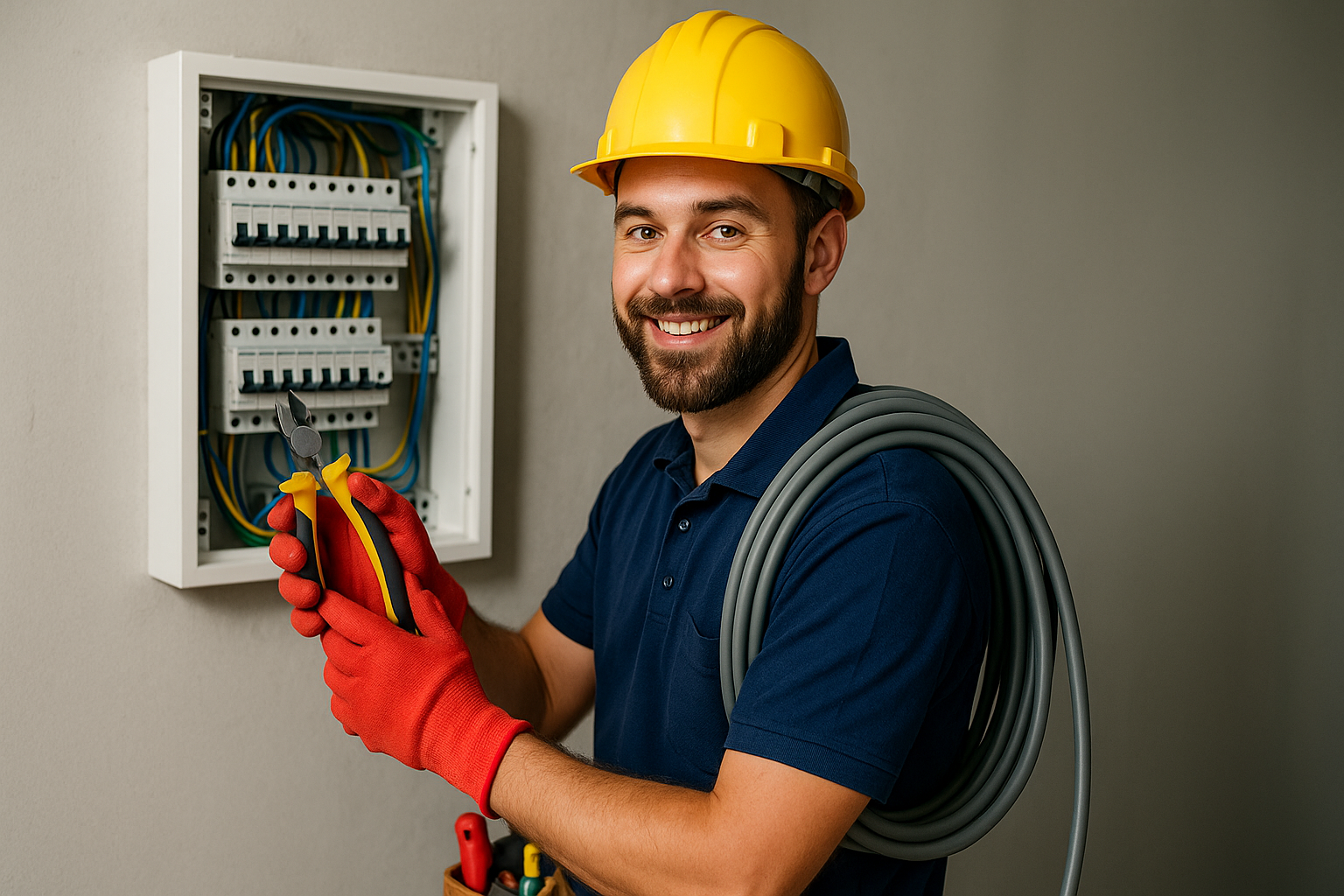Children are naturally curious. As they explore the world around them, they reach, grab, and poke at anything they can find including electrical outlets, wires, and appliances. While this curiosity is a normal and important part of growing up, it can also be dangerous if your home isn’t properly childproofed.
Electrical accidents are one of the leading causes of injuries in young children. Even something as small as sticking a toy or finger into an outlet can result in serious burns, electric shock, or worse. Fortunately, with a few simple precautions and the right safety measures, you can create a safer environment and greatly reduce the risks.
This guide will walk you through practical, effective steps to childproof your home’s electrical system and keep your little ones safe.
Install Outlet Covers and Safety Plates
One of the first places to start is your electrical outlets. They’re usually at eye level or within easy reach for toddlers, making them tempting targets for exploration.
Outlet covers are inexpensive, easy to install, and one of the most effective ways to prevent accidents. There are several types to choose from:
-
Plastic plug-in covers: These fit directly into the outlet holes and block access. They’re affordable but can be a choking hazard if children learn to remove them.
-
Sliding safety plates: These replace your existing outlet covers. The internal shutter slides open only when a plug is inserted correctly. They’re more secure because they can’t be easily removed by children.
-
Box-style covers: These enclose the entire outlet and plug, ideal for outlets that need to remain in use (like lamps or appliances).
Safety tip: Use sliding or tamper-resistant covers for the best protection, especially in frequently used areas like the living room or nursery.
Use Tamper-Resistant Receptacles (TRRs)
If you’re renovating or building a new home, consider installing tamper-resistant receptacles (TRRs). These are designed with built-in shutters that block anything other than a proper plug from being inserted.
In fact, TRRs are now required by electrical codes in new homes in many countries. They provide long-term protection and eliminate the need for removable covers, which children might figure out how to remove.
Where to install them:
-
Living rooms and bedrooms
-
Kitchens and bathrooms
-
Play areas
-
Any room with easily accessible outlets
It’s a small investment that significantly improves safety.
Secure Power Strips and Extension Cords
Power strips and extension cords are particularly dangerous to children. They not only provide multiple points of contact but also pose tripping and chewing hazards.
What you can do:
-
Use power strip covers: These are plastic enclosures that block access to unused outlets.
-
Mount power strips out of reach: Use wall-mounted brackets or place them behind furniture.
-
Keep cords organized: Use cord clips or covers to keep them off the floor and away from curious hands.
-
Avoid overloading: Too many devices plugged into one strip increases the risk of overheating and fire.
Safety reminder: Never run extension cords under carpets or rugs – they can overheat and cause fires.
Hide or Cover Exposed Wires
Loose or dangling wires are not just messy – they’re dangerous. Children can pull on them, chew them, or even wrap them around their necks.
Solutions include:
-
Cord covers or cable management kits: These keep cords hidden and out of sight.
-
Furniture placement: Arrange furniture to block access to outlets and cords.
-
Cord shorteners or winders: These reduce the length of cords, preventing kids from grabbing them.
-
Conduit covers: For more permanent solutions, consider installing plastic or metal conduits to hide and protect exposed wiring.
Use Outlet Covers for Appliances Too
Kitchen appliances like blenders, toasters, and coffee machines often stay plugged in, which can be dangerous if a child tries to pull on the cords or stick objects into the outlets.
What you can do:
-
Unplug appliances when not in use.
-
Use outlet covers even in the kitchen.
-
Store appliances out of reach or inside cabinets with safety locks.
Additionally, avoid leaving appliances near the edge of countertops where children can grab them and pull them down.
Keep Electrical Devices Away from Water
Water and electricity are a deadly combination. Bathrooms, kitchens, and laundry areas are high-risk zones where accidents are more likely to occur.
Safety tips:
-
Never use electrical appliances near sinks, tubs, or water sources.
-
Keep devices like hairdryers and electric shavers unplugged and stored safely after use.
-
Install Ground Fault Circuit Interrupters (GFCIs) in bathrooms, kitchens, and outdoor areas. These automatically cut off power if a fault is detected, reducing the risk of shock.
Teach Children About Electrical Safety
While physical barriers and safety devices are essential, teaching your child about electrical safety is just as important. Even toddlers can learn basic safety rules if you explain them in simple terms.
Things to teach:
-
Never touch outlets, switches, or plugs.
-
Don’t put objects into outlets.
-
Stay away from appliances when they’re in use.
-
Never touch cords with wet hands.
Reinforcing these lessons as your child grows will help them understand the dangers and avoid risky behavior.
Install Child-Safe Light Switch Covers
Toddlers love flipping switches on and off, which might seem harmless but can pose risks if the fixture is faulty or overloaded. Installing child-safe switch covers keeps little hands from playing with them.
Also, check light fixtures regularly to make sure they’re in good condition. Loose connections, flickering lights, or warm switches should be repaired immediately.
Inspect and Maintain Your Electrical System Regularly
Childproofing is not a one-time task – it’s an ongoing process. Regular inspection and maintenance can prevent accidents before they happen.
What to check:
-
Loose outlets or switches
-
Frayed wires or damaged cords
-
Overloaded power strips
-
Burn marks or unusual smells near outlets
If you notice anything unusual, call a licensed electrician. Annual inspections are also recommended, especially in older homes, to ensure your electrical system is safe and up to code.
Be Extra Cautious Outdoors
If you have outdoor outlets or electrical equipment, they need special attention too. Kids playing outside may not recognize the dangers.
Outdoor safety tips:
-
Use weatherproof outlet covers.
-
Keep extension cords and outdoor lights out of reach.
-
Lock outdoor outlets when not in use.
-
Teach kids to stay away from power tools, lawn equipment, and other outdoor electrical devices.
Prevention is the Best Protection
Childproofing your home’s electrical system might seem like a lot of work, but it’s one of the most important steps you can take to protect your child’s safety. The truth is, most electrical accidents involving children are entirely preventable. With a few safety products, regular maintenance, and clear rules, you can create a safer home where your child can explore without unnecessary risks.
Remember: children are quick, curious, and often unpredictable. It only takes a second for an accident to happen, so taking preventive measures today can make all the difference tomorrow. By combining physical safety features like outlet covers and cord organizers with consistent supervision and education, you’ll have peace of mind knowing your home is a safe place for your family to grow and thrive.

